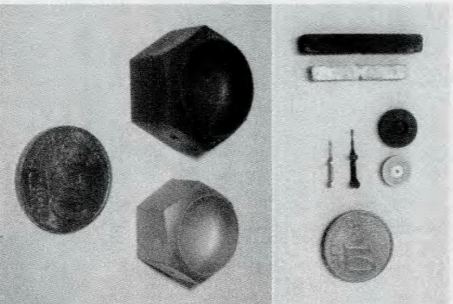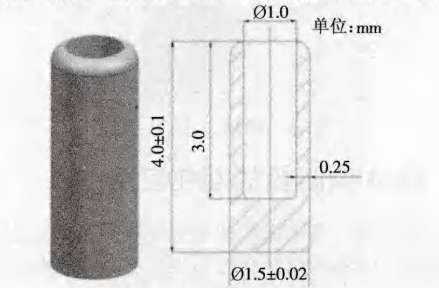Introduction
Tungsten powder metallurgy is a sophisticated manufacturing process that plays a crucial role in producing high-performance materials for various industries. Tungsten’s exceptional properties, such as its high melting point, hardness, and density, make it invaluable in applications requiring extreme durability and reliability. This article delves into the advantages of tungsten powder metallurgy, the detailed process of creating tungsten parts, and its diverse applications across multiple industries.

Advantages of Tungsten Powder Metallurgy
Exceptional Strength and Hardness
Tungsten is renowned for its remarkable mechanical properties. Its high density and hardness make it an ideal material for applications requiring exceptional strength. In the aerospace and defense industries, tungsten components are used in environments where materials are subjected to extreme forces and stresses. For instance, tungsten alloys are used in the construction of armor-piercing ammunition and high-speed projectiles, where their ability to withstand impact and abrasion is critical.
High Temperature Resistance
One of the most significant advantages of tungsten is its high melting point of 3422°C, which is the highest of all metals. This property makes tungsten an essential material in industries that operate at high temperatures. In the aerospace sector, tungsten is used in rocket nozzles and other components that must endure the intense heat of propulsion systems. Similarly, in the electronics industry, tungsten’s thermal stability is leveraged in the production of filaments and other components that operate at high temperatures.
Excellent Wear and Corrosion Resistance
Tungsten’s resistance to wear and corrosion extends its applicability to industries requiring long-lasting and reliable components. Tungsten carbide, a compound of tungsten and carbon, is particularly noted for its hardness and wear resistance. This makes it ideal for manufacturing cutting tools, mining equipment, and other industrial machinery that must withstand harsh conditions and prolonged use. Tungsten’s corrosion resistance also ensures longevity in applications where components are exposed to corrosive environments.
The Tungsten Powder Metallurgy Process
Powder Production
The first step in tungsten powder metallurgy is the production of tungsten powder. This is typically achieved through hydrogen reduction of tungsten oxides, where tungsten trioxide (WO3) is reduced in a hydrogen atmosphere to produce pure tungsten powder. Mechanical alloying is another method used to produce tungsten powders with specific alloy compositions. Quality control during powder production is vital to ensure consistency and purity, which are critical for the performance of the final product.
Compaction and Shaping
Pressing Techniques
Once the tungsten powder is produced, it is compacted into a desired shape using pressing techniques. Uniaxial pressing involves applying pressure in one direction to form a compact shape, while isostatic pressing applies pressure uniformly from all directions, resulting in a more uniform density. Each method has its advantages; uniaxial pressing is simpler and faster, while isostatic pressing provides superior material properties.
Additive Manufacturing
Additive manufacturing, or 3D printing, has revolutionized the shaping of tungsten components. Using techniques such as Selective Laser Melting (SLM) or Electron Beam Melting (EBM), tungsten powder is precisely melted and fused layer by layer to create complex geometries that would be difficult or impossible to achieve with traditional methods. This approach allows for greater design flexibility and the ability to produce highly intricate and customized components.
Sintering and Post-Processing
Sintering Process
After shaping, the tungsten compact undergoes sintering, a process where it is heated to a temperature below its melting point in a controlled atmosphere. During sintering, the particles bond together, resulting in a solid, dense material. This process enhances the mechanical properties of the tungsten component, ensuring it meets the required specifications for its intended application.
Post-Processing Techniques
Post-processing is essential to refine the properties and performance of the sintered tungsten parts. This may include heat treatment to further improve mechanical properties, machining to achieve precise dimensions and tolerances, and surface finishing techniques such as polishing or coating to enhance durability and appearance. Each post-processing step is critical to ensuring the final product meets stringent quality standards.
PIM pure tungsten research
At present, the traditional pure tungsten or nearly pure tungsten materials generally use die-pressing – powder metallurgy high-temperature sintering preparation of blanks, and then complex machining, serious energy consumption, high manufacturing costs, raw material waste, very low yield, so the use of powder injection molding technology directly preparation of ultra-high density, ultra-high shape complexity of tungsten parts has become inevitable development.
Pure tungsten injection molding adding nanometer tungsten powder and optimizing the design of multi-particle powder composition method, with high-reliability pure tungsten electrode as the target application, has a good effect. Tungsten metal powder injection molding technology, through the powder and feed preparation, injection and degreasing, sintered at 1700°C, the density of the material can be higher than 98.3%, and the grain size is less than 2um.

Applications of Tungsten Powder Metallurgy
Aerospace and Defense
In the aerospace and defense sectors, tungsten powder metallurgy produces critical components that must withstand extreme conditions. Tungsten’s high density and strength make it ideal for constructing counterweights, ballast, and shielding materials in aircraft and spacecraft. In defense, tungsten alloys are used in the manufacture of armor-piercing rounds and kinetic energy penetrators due to their ability to penetrate heavy armor.
Electronics and Energy
Tungsten’s thermal and electrical conductivity make it indispensable in the electronics and energy industries. It is used in the production of electrical contacts, filaments for lighting, and heating elements for high-temperature furnaces. In the energy sector, tungsten’s high melting point and thermal conductivity are leveraged in applications such as nuclear reactor components and radiation shielding, where reliable performance under extreme conditions is crucial.
Industrial and Medical
Industrial Tools and Wear Parts
Tungsten carbide tools are essential in various industrial applications due to their extreme hardness and wear resistance. These tools are used in machining, mining, and construction, where durability and performance are paramount. Case studies have shown that tungsten carbide tools significantly outperform conventional steel tools in terms of longevity and efficiency, reducing downtime and maintenance costs for industrial operations.
Medical Devices
In the medical field, tungsten’s unique properties are utilized in imaging and radiation therapy. Tungsten’s high density makes it an effective material for radiation shielding in medical imaging devices, ensuring patient and operator safety. Additionally, tungsten components are used in radiotherapy equipment, where precise control and reliability are essential for effective treatment. Custom tungsten solutions are developed to meet the specific needs of medical applications, enhancing the performance and safety of medical devices.
Conclusion
Tungsten powder metallurgy offers numerous advantages, from exceptional strength and high-temperature resistance to excellent wear and corrosion resistance. The detailed process of producing tungsten components, from powder production to post-processing, ensures that the final products meet the highest standards of quality and performance. With its diverse applications across aerospace, defense, electronics, energy, and medical industries, tungsten powder metallurgy continues to drive innovation and deliver reliable solutions for demanding environments.


